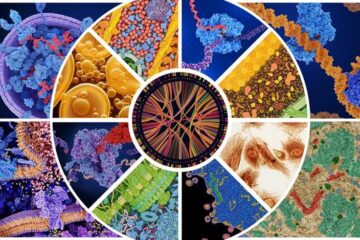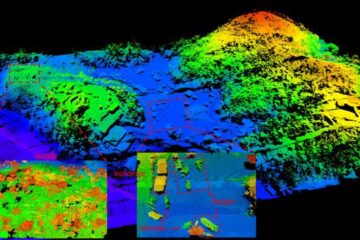Model for common type of cancer developed by UCLA scientists

Scientists at UCLA’s Jonsson Cancer Center have developed the world’s first animal model for mature human B-cell lymphomas, a discovery that may lead to the uncovering of the genetic mutations that cause these types of cancer. Mature B-cell type lymphomas account for about 85 percent of all lymphomas.
The basic science discovery is outlined in the Oct. 29 issue of the peer-reviewed journal Proceedings of the National Academy of Sciences.
“What we can do now is grow cell lines out of this model to determine which cancer-causing companion mutations arise,” said Dr. Mike Teitell, a physician and researcher at UCLA’s Jonsson Cancer Center and the lead author of the article, available online at www.pnas.org/. “This model appears to yield a large spectrum of mature B-cell lymphomas.”
Teitell, collaborator Randolph Wall, and their research team, scientist Katrina Hoyer and Dr. Samuel French, had previously identified an abnormality in a gene called T-cell leukemia 1 (TCL1) in patients with B-cell lymphomas, especially in those suffering from AIDS.
The researchers wondered what would happen if they developed an animal model with abnormally expressed TCL1 — would the model develop cancer? Teitell and his team got more than they expected: animals with abnormally regulated TCL1 developed three different types of lymphoma.
“This finding suggested that specific mutations in addition to TCL1 were causing distinct types of B-cell malignancy. It was a very surprising result,” Teitell said “Before this, we did not have a model for any of these forms of lymphoma. Since we can now generate all these different types, we are in a position to understand the changes that cause each type. For example, why does one animal with abnormal TCL1 expression develop one type of lymphoma, while a genetically identical animal develops a different type?”
B-cell lymphomas include both Hodgkin’s and non-Hodgkin’s lymphomas. Specifically, the three types of B-cell lymphoma that grew out of Teitell’s animal model were Burkitt-like lymphoma, diffuse large B-cell lymphoma and follicular center cell lymphoma, all of which are classified as non-Hodgkin’s lymphomas.
Now the team wants to know why these three forms arose in the same genetic background. Teitell theorizes that there may be different cell pathways — or highways that cells use to send signals — involved in the three different types of lymphoma. If Teitell and his team can identify the pathways, they can attempt to block them with new drugs, Teitell said, akin to hitting the brake on a car or turning off a light switch. The idea is to interrupt the cell signal before it triggers the genetic mutation that causes the cancer to begin to grow.
“I think we may have identified an important mechanism that links certain signaling pathways with the causation of certain cancers, in this case in the immune system but perhaps in other parts of the body as well,” Teitell said.
Lymphomas are cancers that start in lymphoid tissue, also called lymphatic tissue. The lymphatic system is important for filtering germs and cancer cells, as well as fluid from the extremities and internal organs. Lymphoid tissue is found in many places throughout the body, including lymph nodes, the thymus, the spleen, the tonsils and adenoids, in the bone marrow, and scattered within other systems, such as the digestive and respiratory systems.
About 60,000 Americans will develop lymphomas, and 26,000 people will die of the disease this year alone, according to the American Cancer Society.
The next step for Teitell and his research team will be to develop molecules that block the action of TCL1, trying to discover what cell pathway or pathways are being used by cells destined to become malignant. They also are working to discover if TCL1 is abnormally expressed in other human cancers.
“I think this has real promise,” Teitell said. “This has a chance to go all the way.”
Media Contact
All latest news from the category: Health and Medicine
This subject area encompasses research and studies in the field of human medicine.
Among the wide-ranging list of topics covered here are anesthesiology, anatomy, surgery, human genetics, hygiene and environmental medicine, internal medicine, neurology, pharmacology, physiology, urology and dental medicine.
Newest articles

A universal framework for spatial biology
SpatialData is a freely accessible tool to unify and integrate data from different omics technologies accounting for spatial information, which can provide holistic insights into health and disease. Biological processes…

How complex biological processes arise
A $20 million grant from the U.S. National Science Foundation (NSF) will support the establishment and operation of the National Synthesis Center for Emergence in the Molecular and Cellular Sciences (NCEMS) at…

Airborne single-photon lidar system achieves high-resolution 3D imaging
Compact, low-power system opens doors for photon-efficient drone and satellite-based environmental monitoring and mapping. Researchers have developed a compact and lightweight single-photon airborne lidar system that can acquire high-resolution 3D…





















